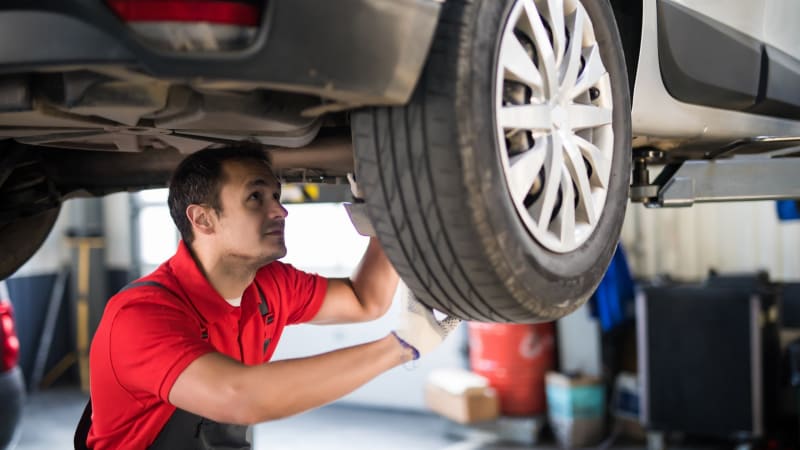How long do car tires last?

Car tires are an important part of keeping your car in top condition. If yours aren’t well maintained, it’ll impact how your car drives and may cause further issues. But tire maintenance doesn’t look the same for everyone—some different signs and timelines indicate when it's time for a checkup or a replacement. Here are some tried and true tire maintenance tips that will help lengthen tire life in addition to some signs and symptoms for when it's time to swap them out.
Is tire maintenance based on mileage?
In great part, the answer is yes. The more miles a car travels, the more wear and tear on your tires. Though mileage is a primary indicator of when to change out your tires, there are other factors to this equation to consider before you replace your tires.
Tire wear and possible replacement are based on a few things: tread depth, age, use, and mileage. But how do you know when it's actually time to change your tires?
Four signs it’s time to change your tires
- Tread depth. Your tread depth refers to depth of the grooved rubber that makes contact with the road. As tires are used, the tread is worn off, which affects its traction. Over time, you drive more and more, your mileage goes up and your tread depth gets smaller. Some states require a tire change when your tires have 1/16 inch or less of remaining tread depth. There are gauges to help measure tread depth or you can have a mechanic take a look when you bring your car in for service.
- Age. Check your tire’s manufacturer guidelines to determine the life of your tires. Even if your tires are lightly used and seem to be in good shape, your manufacturer will have a maximum number of years at which they should be changed. The six to ten year mark is typically the age range found across the industry.
- Bulges, blisters and cracks. If you notice any bulging or blistering in your tires, it’s time to take your car in for service. These physical symptoms mean your car is at high risk for a flat or tire blow out.
- Mileage. Check your car owner's manual to see the recommended mileage for a tire change, but on average you’ll see most manufacturers and auto sites report tires to last about 50,000 miles before needing a tire change.
Three ways to get the most out of your tires
From the day you get your car, get the most use out of your new tires using the following practices:
- Check your tire pressure regularly. Under or overinflation is one of the leading causes of premature tire wear. Most modern cars have a warning light on the dashboard that goes on when your tire pressure is low, or you can buy a digital gauge or take it to the mechanic regularly to get checked.
- Rotate your tires. Rotating your tires is like flipping a mattress—if you’ve been sleeping in the same spot for months, you’ll notice an indent. This is similar to what happens to your tires on the road. If you rotate your tires based on the manufacturer’s recommendation, you can distribute the wear evenly across all four tires, so the complete set will last longer.
- Get the wheels aligned. If you notice your car drifting to one side of a straight road, this may mean your wheels are out of alignment. This condition can cause uneven wear and affect their life.
How much air to put in your tires
The right tire pressure will maximize your gas mileage and, as we mentioned, your tires’ life. The correct tire pressure isn’t one size fits all—it’s determined by the type of tire and vehicle. The recommended tire pressure should be listed on the inside of your driver’s door or in your car manual. The standard tire pressure for passenger cars is 32 to 35 PSI (pounds per square inch).
You may find a PSI number on your tire itself, but this is not what you should be basing your tire pressure on. That number shows the maximum amount of air a tire can take. If you inflate your tire to the maximum number, you may have a bumpy ride.
How much are car tires?
The price of a new tire can range from less than $100 to more than $1,000. Many factors influence the price of car tires including their:
- Size
- Brand and quality
- Type (standard, off-road, high performance, etc.)
- Materials and design
If you’re not sure if you need to change your tires, do some research based on your price range and vehicle’s needs. If you’re still in doubt, you can reach out to a dealership, tire retailer, or mechanic for a price quote and a professional recommendation.



